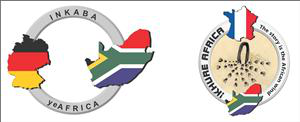Speaker
Ms
Andrea Baker
(Stellenbosch University)
Description
Southern Africa is situated at a dynamic junction between tropical, subtropical and temperate climate systems, which are subject to seasonal excursion in the Inter Tropical Convergence Zone (ITCZ) and sea surface temperature (SST) gradients between the two regional oceans. As a consequence of topography and semi-arid climate, there is a lack of continuous terrestrial climate archives in the region and therefore, uncertainty prevails over how terrestrial ecosystem responded to past climate fluctuations and their dominant forcing mechanisms. The literature consists of limited terrestrial climate archives that rarely extend past the last glacial maximum (LGM) and those that do, tend to suffer from temporal discontinuities, dating uncertainties and are geographically clustered, resulting in ambiguity. In this study, we employed biomarker proxies extracted from the Mfabeni Peatland, KwaZulu Natal, South Africa, which returned a basal 14C age of c. 47 kcal yr BP, positioning it as one of the oldest continuous coastal peatlands globally. This unique peat archive allowed us to reconstruct organic matter sources, palaeohydrology and diagenetic conditions on the eastern coastline of Southern Africa using molecular (alkane and fatty acid) distributions, and compare these palaeoenvironmental signals to other regional climate records. A significantly negative correlation was observed with Paq versus ACL and CPI alkane proxy trends, while peatland diagenesis and organic matter source indicators (TOC versus saturated / unsaturated fatty acids and Paq versus Pwax, respectively) showed similar trends to Indian Ocean marine core SST and continental rainfall runoff trends. Therefore, we postulate that the local plant assemblages responded more strongly to moisture availability than temperature fluctuations, and the regional climate was dominated by the Indian Ocean SST, as opposed to insolation fluctuations, during the late Pleistocene and Holocene.
Primary author
Ms
Andrea Baker
(Stellenbosch University)
Co-authors
Prof.
Alakendra ROYCHOUDHURY
(Stellenbosch University)
Dr
Joyanto Routh
(Linköping University)

